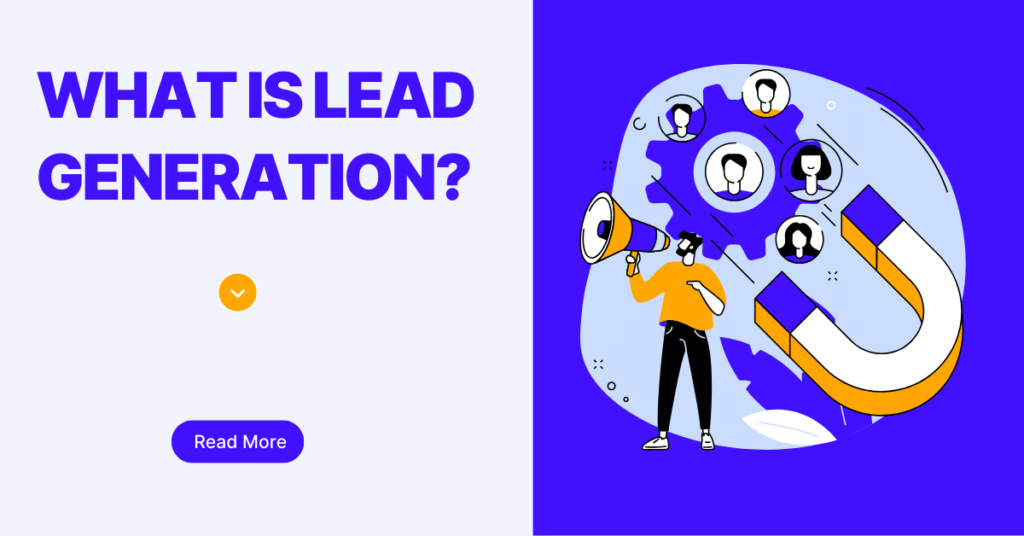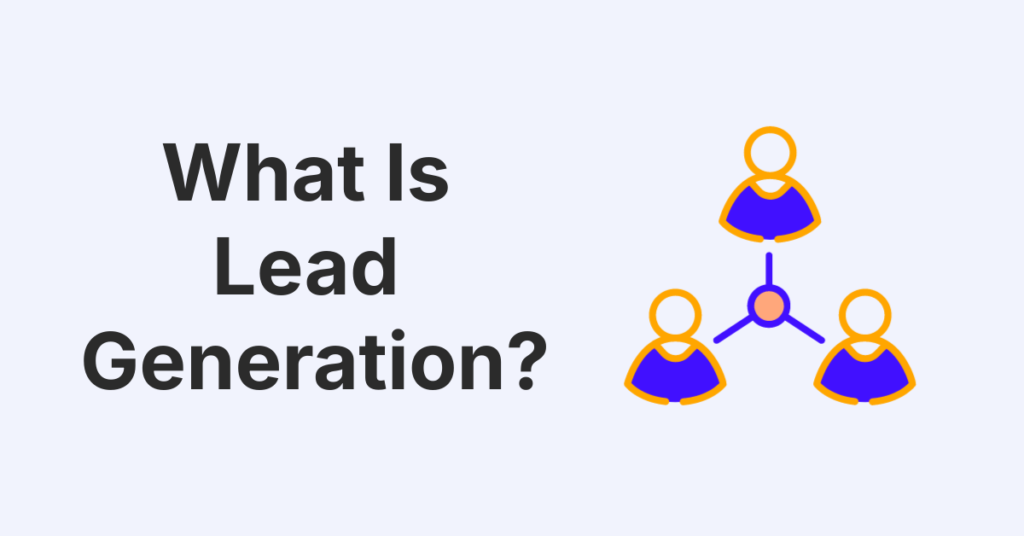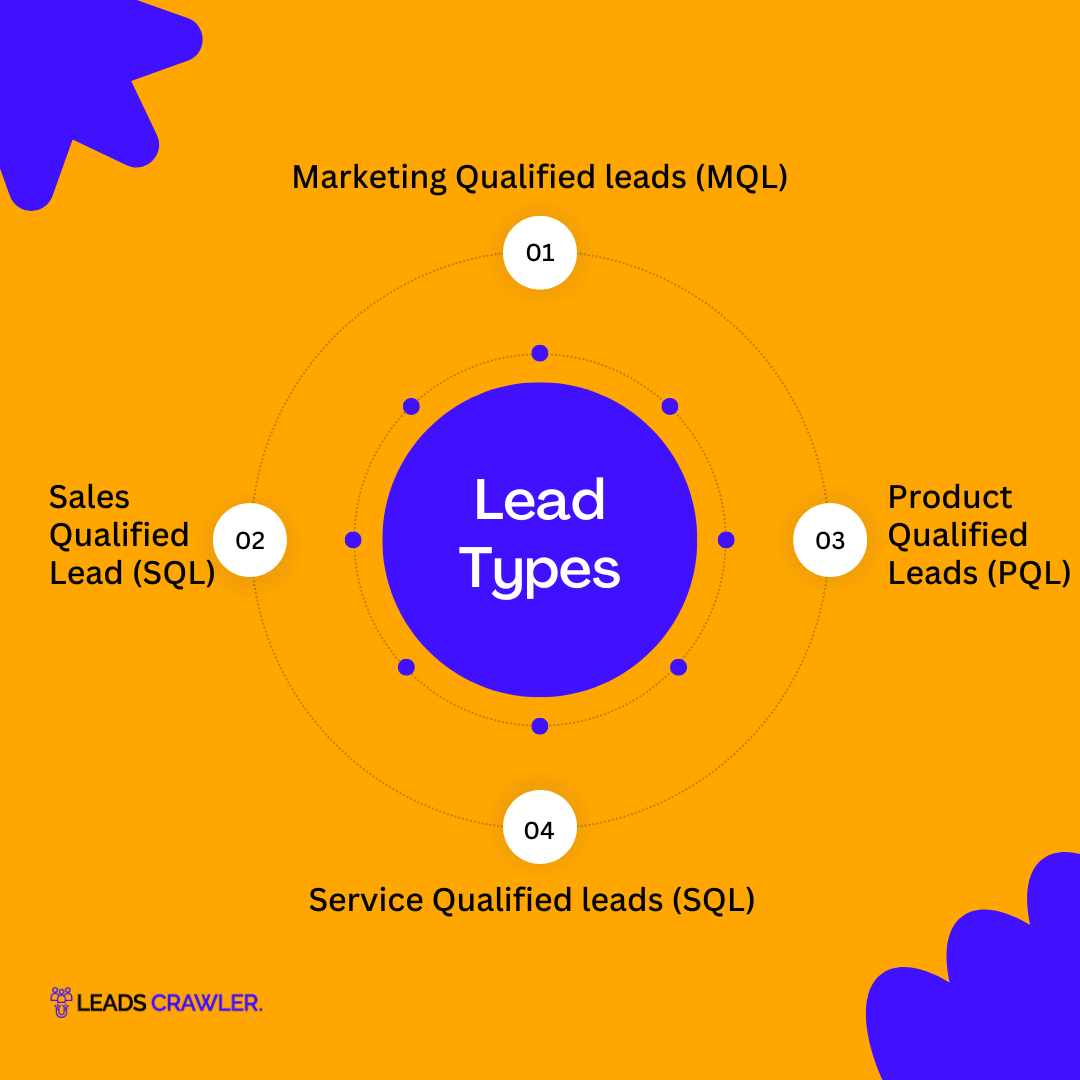The financial survival, growth, and scalability of a business directly depend on the diverse customer base created through different channels. It may seem lucrative initially, but steady and exponential growth is challenging.
It requires ongoing client acquisition processes to achieve its business goals. Different sales tactics and strategies are implemented for this purpose. That includes lead generation through marketing campaigns, funnels, and landing pages. So, first, we will try to understand this concept.
Article Summary:
“Lead generation is a process of accumulating the contact information of potential clients using different marketing methods. Web scraping, email extraction tools, contact forms, and landing pages are used to collect such information. Social media, PPC ads, SEO blogs, webinars, and forums are key marketing channels that are used to generate high-quality leads.”
What Is a Lead?
“The definition of lead gives an understanding of the sales prospects a business tries to achieve for steady growth. A lead is raw information about potential customers that is used in the sales funnel for outreach through different marketing campaigns.“
Which is collected through inbound marketing and paid advertising strategies. The sales team then uses different marketing approaches to convince such customers about their business/product for conversion.
B2B and B2C are two basic types of leads that are used in building a customer’s persona. That depends upon the product’s objective and usefulness.
Also Read: What Is Outsourced Lead Generation?
What Is Lead Generation?

Companies or businesses selling high-priced products struggle to get direct sales on their websites, apps, and other sales channels because buyers are less likely to spend huge amounts on such things, which is where lead generation comes in.
It is a process to collect raw information from potential customers or clients, like emails, phone numbers, and other relevant contact information, through strategic marketing funnels. These clients are educated and encouraged with product guides.
This process is called lead nurturing and brings customers one step closer to making a final decision. Traditional lead generation methods like cold calling are nearly obsolete and have been replaced by more result-oriented ones.
Lead generation funnels can be in the shape of surveys, survey forms, and freebies offered by business owners and marketers.
“Like an SEO professional shares his link-building cheatsheet on X to get high free authority backlinks for your website. He asks you to submit your email address in the DM section to get that stuff. So you decided to sign up for it.
Just a few days later, he sends another email asking you to check out their newly built platform to connect publishers from different niches or offering a free trial to a link-building SEO tool. This is how it works.”
How Lead Generation Works?

Sustainable growth is the objective of every business, thus, they focus on their sales cycle. B2B leads are hard to close, and it can take a month to almost a year to convert a B2B lead into sales.
So, a continuous cycle of sales outreach is necessary for generating frequent sales. With growing distractions, it is hard for people to focus on a single offer, as your competitors will be targeting the same person or business.
To increase sales possibilities, you need to filter out the potential leads that have higher odds of conversion. So they don’t push unrelated people to purchase their product. Leads consist of customer personas for building a marketing funnel with higher sales chances.
Types of Leads

Based on the different marketing prospects and sales lifecycle, here are some types of leads you should take the account for your sales funnel.
Marketing Qualified leads (MQL)
MQL is raw details of a lead that are obtained from a signup form or an offer page. Such customers are not yet ready for a sales call and need to be nurtured.
Sales Qualified Lead (SQL)
SQL is a type of lead that expresses the buying intent of a person. Like someone was impressed with a specific feature of your product during the marketing process and asked for more information. That comes under the criteria of Sales Qualified Leads.
Product Qualified Leads (PQL)
PQLs are established for customers already used a limited version or a free trial of your product. In case they ask a question about the product pricing and extended features for the paid version, this indicates the intent as product-qualified leads.
Also Read: SaaS Lead Generation Strategies
Service Qualified leads (SQL)
This process of the sales funnel includes users showing their interest in the upgraded version. Someone using the free version of the product approaches the support team to become a paid user.
This is called service service-qualified lead, and the sales team handles such queries to channel the successful purchase of the product.
Lead Generation Process
Multichannel marketing efforts are involved in the lead-generation process through social media, blogs, PPC ads, and more. All such campaigns end up with a solid call to action.
That takes the users to a landing page designed to collect specific information. Some people use free resources like e-books, freebies, and free trials. All of your offers must carry some value for visitors to share their details.
Marketing Channels Used In Lead Generation
There are multiple resources used by businesses and marketers in the lead-generation process. Here are some of the most popular methods.
Email Marketing
This lead generation channel is still popular with the best ROI as compared to other resources. You can reach out to the most relevant people in your email list to promote this product.
Blog/Website
Blog websites are some of the best ways to generate leads for your business. This inbound strategy allows you to get the attention of a massive audience. It mainly involves solid SEO investment for long-term returns through search results.
Social Media Ads
Social media channels like Facebook, Instagram, and X are popular among the masses. They have billions of active users with ad personalization features. So, advertise your product to a large number of people with a catchy call to action. Encourage them to visit your landing page.
Events And Webinars
Webinars and physical events like conferences are good ways to promote your product before an industry-relevant audience. If you have a good marketing budget, offer sponsorship to industry-related events and announce free workshops during such events.
Collect the business and personal details of the participants as leads, then offer them product trials on the go. Utilize multiple marketing strategies to promote your product and generate leads.
Referral Marketing Offer
Offer incentives and rewards to your existing customers if they refer your product to more people. Create a separate landing page to collect referral leads and add them to the existing sales funnel for conversion.
forum Communities
Community building can also help you generate new leads and nurture the existing ones. Create a discussion forum within your business website or on social media platforms like Facebook Group, Sub-Reddit, X Community, and LinkedIn Group.
Your existing customers and the people searching for similar products can ask questions. This discussion establishes trust between them with quick feedback.
Search Engine Marketing
Search advertising, usually known as PPC ads, is one of the most common and popular methods for lead generation.
Businesses in every niche use this search engine marketing in their diverse strategy. However, you need a high budget to bid in the competitive business categories.
Also Read: Lead Generation Statistics And Trends
Lead Generation In the Age of AI/ML
Lead generation has become more comfortable with the evolution of automation tools. On the other hand, users can do a thorough search for their required product using social media, search engines, and online communities.
Businesses face challenges with the potential changes in buyers’ interest over time. A strong online presence with inbound marketing strategies is a must to adopt for their survival.
AI and data analysis tools give a deep understanding of potential customers, their demographics, and behavior for lead qualification. With growing competition and the changing interests of customers, it is necessary to follow the latest lead generation trends.
Frequently Asked Questions
Final Thoughts
In the end, lead generation is the backbone of any business’s sustainability and growth. Through a strong foundation, establishing effective strategies, and integration of lead generation tools, you can connect with the target audience.
Lead generation is equally important for businesses of all sizes to thrive in the competitive market. So, as a marketer and aspiring entrepreneur, take advantage to leverage your business objectives.